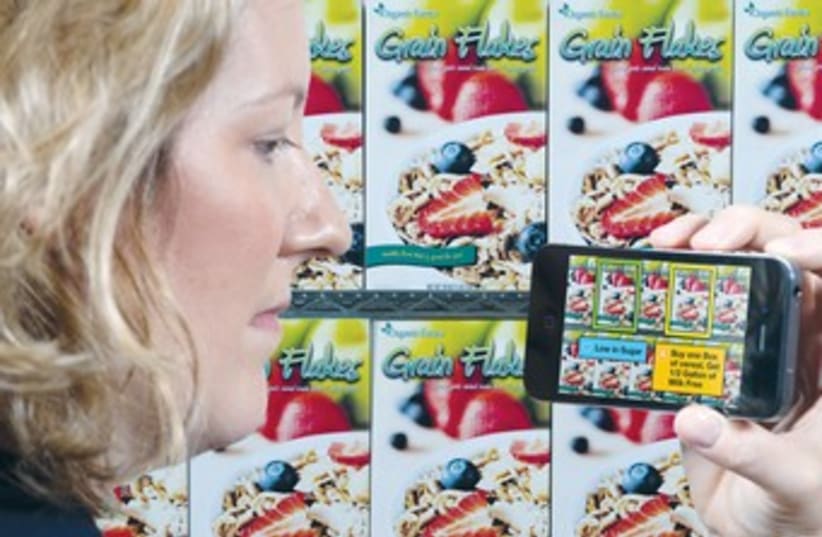Like most people, the only camera that I always carry around with me is in my cell phone. Popular touch-screen smartphones now have very sophisticated cameras that are capable of creating excellent results in the right conditions but have limitations and quirks that it’s sensible to understand. Here are a few tips to help you get the most out of yours.
Size mattersSmartphone cameras have tiny imaging sensors of about 5 x 3mm, which is an effective size. They take sharp, colorful images in bright light but give gritty, blurry, less colorful results in dim conditions.Compact cameras have larger sensors that give superior results: Professional SLRs have the largest sensors, about 5000 percent larger than smartphones, and produce the finest results. Although there are many factors involved, size matters.Bigger sensors give better results.Smartphone manufacturers would like you to believe that packing more Megapixels (millions of pixel elements) onto their tiny sensors will give you sharper, superior pictures. Real world lab tests show that a 5 MP smartphone, can give better images than an 8 MP competitor. If image quality is a factor in your choice of smartphone, search the Internet for reputable websites showing comparative test results.Aperture, speed and sensitivity
The lens of your smartphone usually has a fixed aperture of about F2.6, so to take pictures in bright light the camera will set a fast exposure time. Speeds of up to 1/10,000 sec are possible so the camera will freeze movement and give the sharpest, most colorful pictures in bright conditions.The imaging sensor has a fixed sensitivity to light, typically 50 ISO. In dim light the camera will increase this figure to as much as 400 ISO, which causes pictures to look gritty, with less color and detail.In dim light the camera will also set longer exposure times, possibly as low 1/8 sec, so even slight movements of the camera or the subject will result in blurred pictures.Some smartphones have a small flash for coping with low light. Flash, however, destroys the atmosphere you may wish to capture and so isn’t always appropriate. When the flash fires the camera may set a faster exposure time which results in dark, featureless backgrounds, typical of snaps at night.Taking better pictures in low lightIf your smartphone has a flash you can take better low light portraits by choosing Night Portrait mode, accessed through the menus. This will allow both the flash to fire and the exposure to last long enough to record some background detail.You will get the best low light shots, whether using flash or not, by using a few of the old pro tricks:- The simplest technique is to steady the camera on any firm and convenient surface. Press the camera against a wall, a pole, a door frame, a table or a chair, a fence, etc; if you are sitting at a table plant your elbows into a stable triangle with the camera at the apex.- If no firm surface is available, stand upright with your legs shoulder width apart and bend your knees slightly to lower your center of gravity and minimize any tendency to sway.- Always hold your breath just before you take the shot. Breathing causes slight chest movement that is amplified by the camera causing blurred shots.- If your smartphone has a touch-screen button, practice releasing it without causing jarring the camera. This is not as easy as it may appear, but is a vital smartphone technique.- If possible, take three shots. Choose the sharpest one afterwards.- If possible shoot during a moment when the subject is still. Smartphones take a relatively long time to focus so it’s best to pre-focus them before taking the shot. Pre-focus by tapping the screen on the area you want in focus and waiting for the box to turn green, or by pressing and holding the onscreen “shutter” button while placing the focus box over the area you want in focus.- Even when you pre-focus it will be difficult to capture an exact moment because there is a delay between releasing the “shutter” button and taking the picture. The only way around this is to shoot slightly ahead of time. My smartphone has a continuous mode setting that takes a series of pictures quickly but I never use it because it shoots pictures at a reduced size.- I advise you to never use the zoom function to take a picture with your smartphone. Zooming is a misnomer since the lens does not zoom - all you are doing is cropping the on-screen picture. Unfortunately “zooming” also amplifies the movements of the camera and can be an additional cause of blurred pictures. I suggest you shoot without “zooming” then crop the picture afterwards in the computer. This will give you the zoom effect but without the risk of blur.
Constructive Feedback: If you are aspiring to develop your photography skills, send me a picture and I may use in one in my articles with some constructive feedback. Send one picture only, at a small size to suitable for emails to jpost@langford.co.il.If you don’t know how to send a photo by email at a small size please look at my Brief Guide to Picasa: www.langford.co.il/courses/PicasaGuide.html.
Tom Langford is an Event and Commercial photographer, website designer, and professional retoucher. He teaches photography courses for beginners and improvers. Details of his courses and field trips at: http://www.langford.co.il/courses
Follow @JPost_Lifestyle
